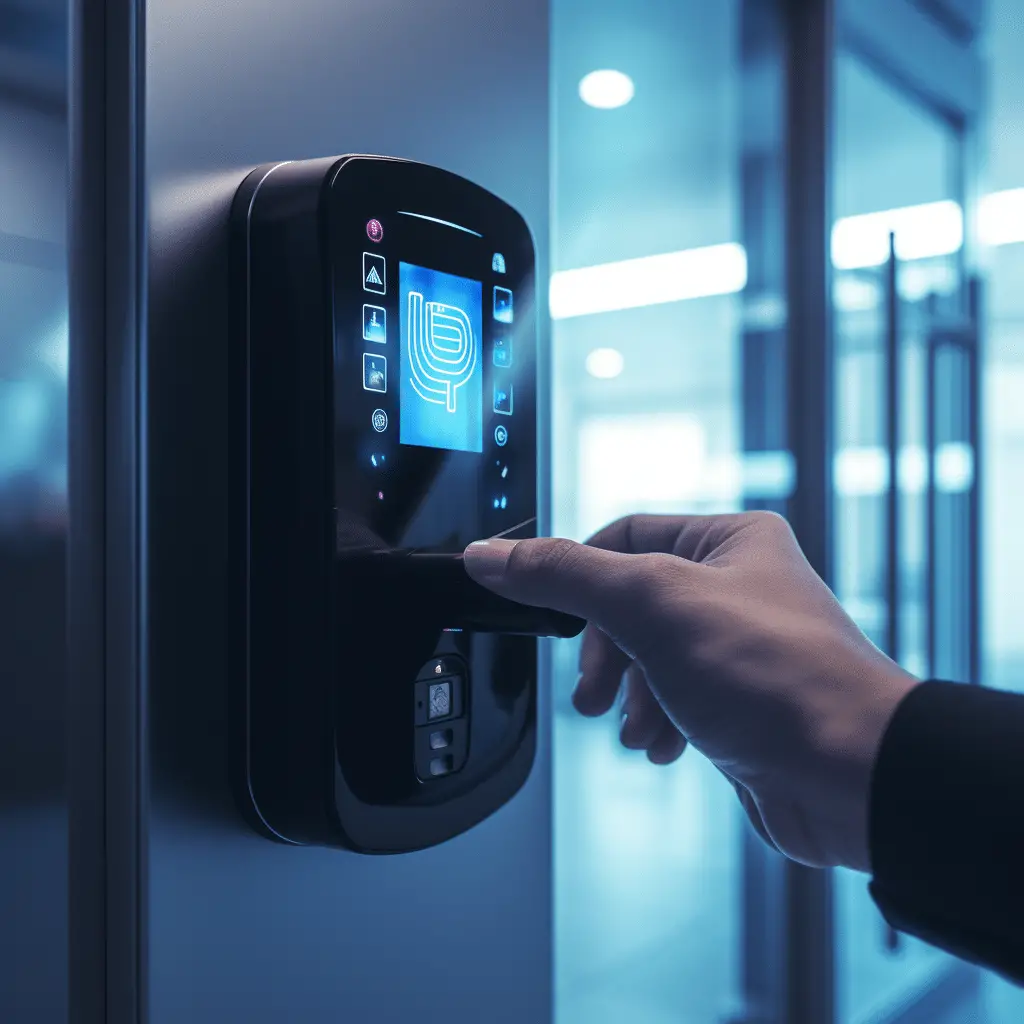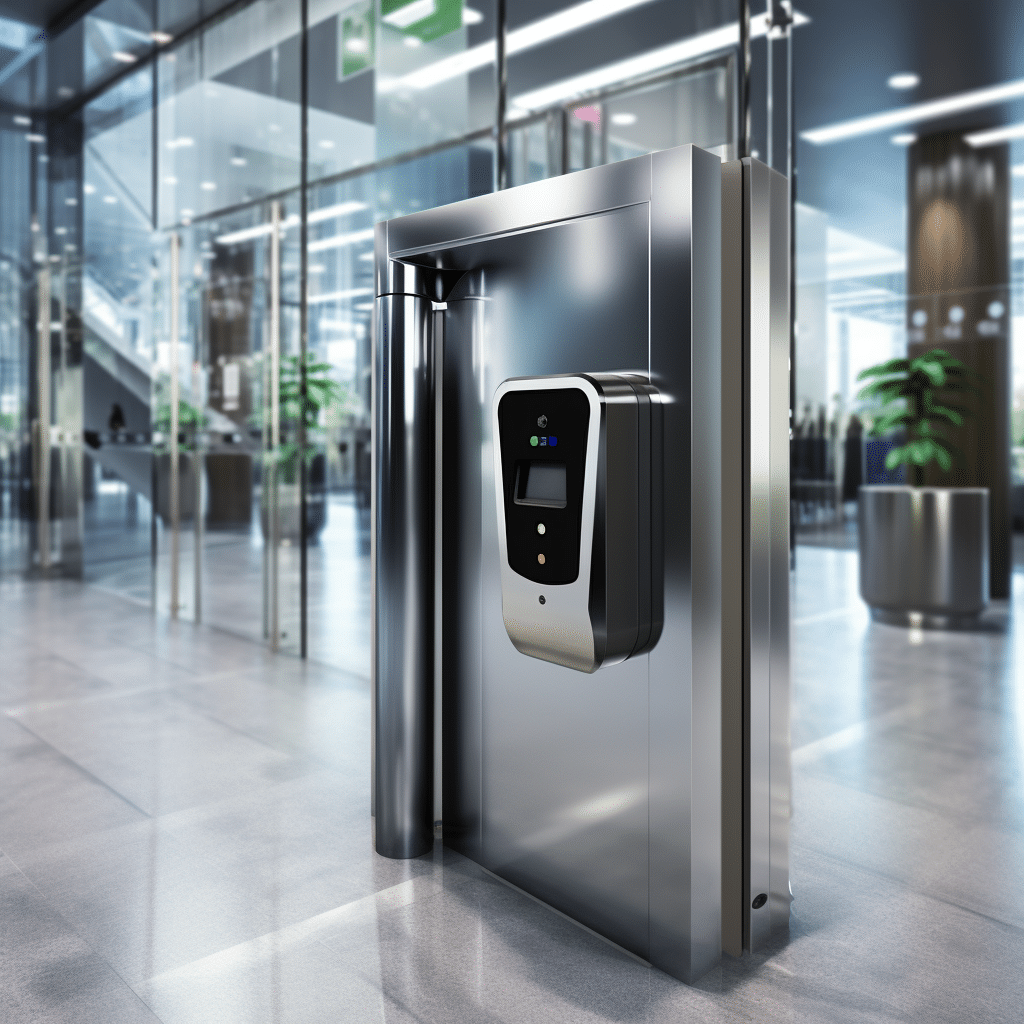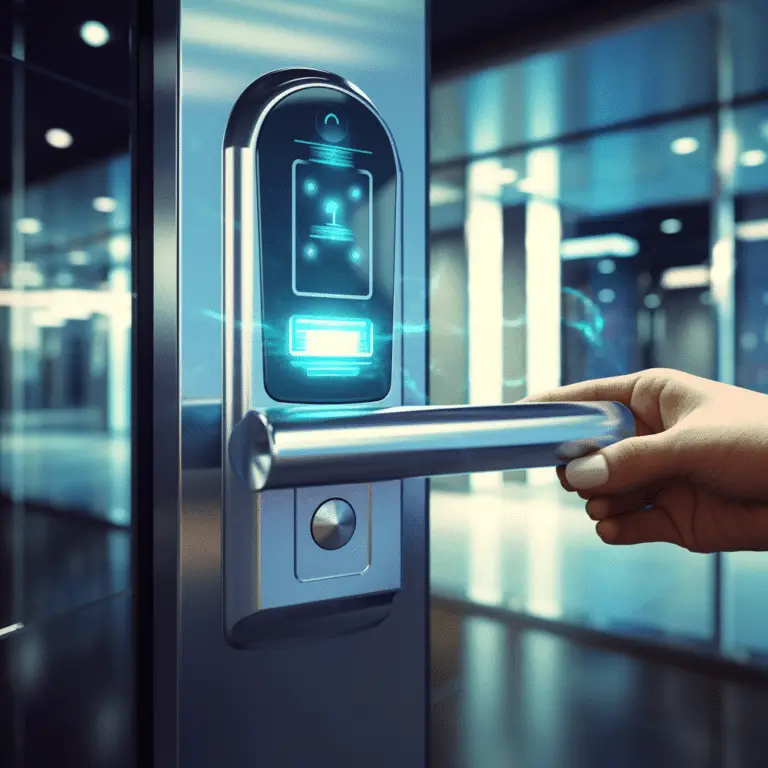Access control systems are an essential component of modern security systems, providing the means to control and monitor access to buildings and sensitive areas. These systems combine physical and electronic measures to ensure the security of premises and effectively manage who can enter and exit.
In this article, I will delve into the basics of access control systems, exploring their types, components, benefits, and important considerations for implementation. By understanding the fundamentals, businesses and individuals can make informed decisions when it comes to securing their premises.
Access control systems play a crucial role in various industries, including commercial buildings, government facilities, and residential properties. They offer a range of benefits, such as enhanced security, improved access management, and increased accountability. As technology continues to evolve, access control systems are becoming more sophisticated with advancements in biometrics, smart cards, and cloud-based solutions.

Key Takeaways:
- Access control systems ensure the security of buildings and control access to sensitive areas.
- They combine physical and electronic measures to manage and monitor entry and exit points.
- Access control systems are widely used in various industries, including commercial buildings, government facilities, and residential properties.
- They offer benefits such as enhanced security, improved access management, and increased accountability.
- Advancements in technology have led to the development of more sophisticated access control systems.
Types of Access Control Systems
Access control systems can be categorized into two main types: physical access control and electronic access control. Each type employs different measures to control and monitor entry and exit points, ensuring the security and integrity of buildings and sensitive areas.
Physical Access Control
Physical access control utilizes physical barriers, such as gates, doors, and turnstiles, to control access. This type of system may include keypads, swipe cards, and proximity cards as means of verification. These physical measures effectively restrict unauthorized individuals from entering restricted areas and provide a visual deterrent against potential intruders.
Electronic Access Control
Electronic access control relies on advanced technology and software to manage access. Biometric systems, such as fingerprint readers and facial recognition, provide high-level security by verifying an individual’s unique physiological traits. Smart card technology and digital access control systems streamline access processes and allow for quick and efficient access management.
| Types of Access Control Systems | Physical Access Control | Electronic Access Control |
|---|---|---|
| Definition | Uses physical barriers and verification measures to control access | Relies on advanced technology and software for access management |
| Examples | Keypads, swipe cards, proximity cards | Biometric systems, smart card technology, digital access control systems |
| Benefits | Visual deterrent, restricts unauthorized access | High-level security, streamlined access management |
Both physical and electronic access control systems serve the primary purpose of preventing unauthorized entry into restricted areas. The choice between the two types depends on the specific security needs and requirements of the organization. Some may opt for a combination of both types to create a layered and comprehensive access control strategy.
Components of an Access Control System
An access control system is composed of several essential components that work together to ensure the security and control of access to a building or sensitive areas within. Understanding these components is vital for effectively implementing and managing an access control system. The key components of an access control system include the access control panel, credentials, readers, and locks.
Access Control Panel
The access control panel serves as the central hub of the system, responsible for processing access requests, storing user information, and controlling the locking mechanisms. It acts as the brain of the system, coordinating the interaction between the various components and ensuring the proper functioning of the overall system.
Credentials
Credentials are used to authenticate the identity of individuals seeking access. These can include swipe cards, key fobs, or biometric data such as fingerprints or facial recognition. Credentials are assigned to authorized individuals and are used to verify their identity at the access control readers.
Readers
Readers are devices that capture the credential data and communicate with the access control panel. They can be in the form of card readers, fingerprint scanners, or other biometric recognition systems. Readers play a crucial role in the authentication process, ensuring that only authorized individuals with valid credentials can gain entry.
Locks
Locks are physical mechanisms that secure entry points and control access. They can include electric strikes, magnetic locks, or other locking mechanisms that are controlled by the access control panel. Locks provide the physical barrier to entry, preventing unauthorized individuals from gaining access even if they have bypassed the authentication process.
An access control system is only as strong as its components. By understanding and ensuring the proper functioning of these key components – the access control panel, credentials, readers, and locks – organizations can create a robust and secure access control system that effectively manages and controls access to their premises.
Benefits of Access Control Systems
Access control systems offer a range of benefits that contribute to enhanced security, improved access management, and increased operational efficiency. Let’s explore some of the key advantages:
- Enhanced Security: Access control systems provide a robust layer of protection by preventing unauthorized access to restricted areas. By ensuring that only authorized individuals can enter specific locations, these systems significantly reduce the risk of security breaches, theft, and other criminal activities.
- Improved Access Management: With access control systems, administrators can easily grant or revoke access permissions as needed. This streamlined process eliminates the need for physical keys or manual record-keeping, saving time and effort. It also allows for efficient management of access levels, ensuring that individuals only have access to the areas required for their roles.
- Audit Trails: Access control systems maintain detailed audit trails that capture information about who entered or attempted to enter a specific area and at what time. This data can be valuable for investigations, compliance purposes, and analyzing patterns of access. Audit trails provide a clear record of access events, enhancing accountability and enabling proactive security measures.
“Access control systems provide a robust layer of protection by preventing unauthorized access to restricted areas.”
Implementing an access control system can greatly contribute to the overall security and efficiency of an organization. By leveraging these benefits, businesses can create a secure and controlled environment, safeguarding their assets, employees, and sensitive information.
| Benefits of Access Control Systems | Description |
|---|---|
| Enhanced Security | Reduce the risk of security breaches, theft, and criminal activities by allowing only authorized individuals into restricted areas. |
| Improved Access Management | Efficiently grant or revoke access permissions, eliminating the need for physical keys and manual record-keeping. |
| Audit Trails | Maintain detailed records of access events, providing valuable data for investigations, compliance, and proactive security measures. |
Considerations for Implementing an Access Control System
Implementing an access control system requires careful consideration of various factors to ensure its effectiveness and compatibility with organizational needs. A thorough needs assessment is a crucial first step in determining the specific requirements of the organization and the areas that need to be secured. This assessment helps in selecting the appropriate access control technology and features that align with the organization’s goals and objectives.
Scalability is another important consideration when implementing an access control system. Organizations should plan for future growth and changes in access requirements to ensure that the system can accommodate expanding needs. By selecting a scalable access control solution, businesses can avoid costly replacements or upgrades down the line and seamlessly integrate new users or access points into the system.
Integration with other security systems is also a key consideration to maximize the effectiveness of an access controls system. Evaluating compatibility with video surveillance, intrusion detection, and other security technologies ensures seamless operation and interoperability. Integration allows for a comprehensive security ecosystem, where different systems work together to provide a holistic approach to security management.
Benefits of an Integrated Security System
Implementing an access control system that integrates with other security systems offers numerous benefits. It allows for centralized management and control, providing administrators with a unified platform to monitor and control access across multiple locations or facilities. This streamlines the access management process, reducing administrative overhead and improving operational efficiency.
Furthermore, integration enables enhanced situational awareness and better incident response. When access control systems are integrated with video surveillance, for example, administrators can easily review video footage and access controls logs to investigate incidents or unauthorized access attempts. This integrated approach enhances security and facilitates quick decision-making in critical situations.
In summary, when implementing an access controls system, organizations should conduct a needs assessment, consider scalability for future growth, and evaluate integration with other security systems. Taking these considerations into account will help organizations select the right access control solution that aligns with their specific requirements and contributes to a secure and controlled environment.

Conclusion
Understanding the basics of access control systems is crucial in today’s security landscape. These systems play a fundamental role in enhancing security, managing access, and improving operational efficiency. By implementing access control systems, businesses and individuals can enjoy the benefits of enhanced security, improved access management, and streamlined processes.
Access control systems offer a range of benefits, including preventing unauthorized access to restricted areas, granting or revoking access permissions easily, and providing detailed audit trails for investigations and compliance. Moreover, they contribute to increased convenience and reduced reliance on physical keys or manual record-keeping.
When implementing an access control system, it is important to consider factors such as conducting a needs assessment to determine specific requirements, ensuring scalability to accommodate future growth, and evaluating integration with other security systems. By carefully considering these factors, organizations can implement access control systems that meet their unique needs and contribute to a secure and controlled environment.
In conclusion, understanding the basics of access control systems, recognizing their benefits, and considering key factors during implementation are essential steps for businesses and individuals seeking enhanced security, improved access management, and operational efficiency. Access controls systems are a valuable tool in protecting buildings and individuals, and they continue to evolve with advancements in technology.
FAQ
What is an access control system?
An access control system is a security measure that uses physical and electronic measures to control and monitor entry and exit points, ensuring the security of buildings and controlling access to sensitive areas.
What are the types of access control systems?
Access control systems can be categorized into two main types: physical access control and electronic access control.
What are the components of an access control system?
An access control system consists of several key components, including an access control panel or controller, credentials, readers, and locks.
What are the benefits of access control systems?
Access control systems offer enhanced security, improved access management, and detailed audit trails. They also increase operational efficiency by streamlining access processes.
What should be considered when implementing an access control system?
It is important to conduct a needs assessment, consider scalability, and evaluate integration with other security systems when implementing an access control system.
Source Links
- https://www.digitaljournal.com/pr/news/cdn-newswire/wireless-wi-fi-conference-system-market-2023-2030-key-insights-and-players-vissonic-bosch-security-barco
- https://www.digitaljournal.com/pr/news/cdn-newswire/database-management-systems-dbms-market-trends-challenges-and-opportunities-2023-to-2030-bmc-software-oracle-ibm
- https://www.openpr.com/news/3259783/building-automation-system-market-projected-to-reach-usd-148-6

